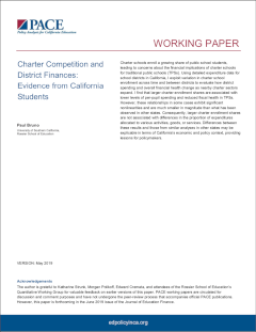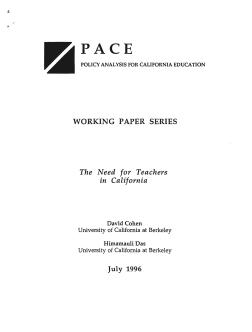Evidence from California
Published
Summary
This paper examines how the growth of charter schools affects traditional public schools' financial health in California. The study finds that higher charter enrollment is associated with lower per-pupil spending and fiscal health in traditional public schools, but the effects are smaller than in other states. However, the proportion of expenditures allocated to different activities, goods, or services does not differ. The paper provides lessons for policymakers and suggests that California's economic and policy context may explain the differences from similar analyses in other states.
California’s Quality Education Investment Act
Published
Summary
This working paper examines the use of Quality Education Investment Act (QEIA) funds, which allocated $2.6B over seven years to California's lowest-performing schools. The authors conducted a study of four Los Angeles high schools to investigate how QEIA dollars were spent in the first year, who made the decisions, and how funds were used to improve teaching and the instructional program. The study found that district officials and principals had discretion in allocating funds, consistent with recent efforts to deregulate categorical-aid programs and give local educators fiscal discretion.
Published
Summary
This baseline analysis examines the projected need for teachers in California based on student enrollment projections, expected rates of new teachers and teacher retirements. However, it does not take into account recent policy changes such as the budget's call for reductions in class size or the proposed changes to teacher credentialing requirements. These changes will impact the need for teachers in California. The analysis shows regional teacher shortages, which are expected to persist despite the new policies.
Published
Summary
The 1995-96 California state budget increased K-12 education funding by $1 billion, but the additional funds were meant to be used for non-recurring expenses like deferred maintenance and facility upgrades. Lottery revenues were also intended for non-recurring expenses, but schools have come to rely on them for their core instructional program, despite decreasing revenues. This paper reviews the history of the California State Lottery as a funding source for schools and how non-recurring costs are interpreted in a system with shortfalls in core programs.



